It seems that LEGO has decided to steer clear of official sets touching on religious themes. I suppose this is because they are an international company seeking to sell to people from all different faith communities and do not wish to offend anyone. Personally I think that's sad - faith is such an important part of the human experience and has had such a prominent role in the development of societies that it seems a glaring lack in, say, their Town, Castle, and Wild West themes. This hasn't always been so. Back in 1957 and 1958 they released two sets, both called "church" or "kirche", 309 and 1309. These are pretty much the same set, except in one the printed brick says "1762" and in the other it says either "ANNO 1762" or "AD 1762". The construction is pretty simplistic and so these sets probably would not be of interest to the modern LEGO fan, except maybe for the square windows and old-style trees that haven't been produced in 30+ years. I can't find any significance to the year 1762. Does anyone have a clue to this? Maybe there is a prominent church in Denmark that was built in that year?
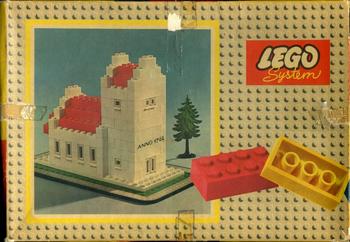
The one way that LEGO may get over their avoidance of religious themes is to go with architecturally significant landmarks that have huge cultural importance in addition to a religious sense. One such is the recent Taj Mahal set.
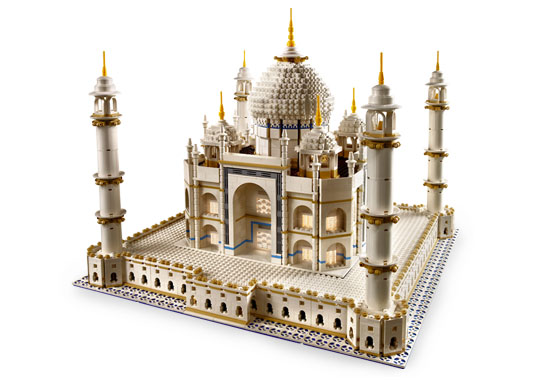
While the Taj Mahal is not a temple or church, it is a mausoleum built for Mumtaz Mahal, the favorite wife of Mughal emperor Shah Jahan, in an Islamic tradition and, for instance, includes verses from the Koran as part of its decoration. Rituals and structures have been intimately linked to faith from tombs in ancient Egypt to European shrines to the saints. If LEGO can make the Taj Mahal a set due to it's architectural and cultural significance, surely they could do the same with something like Notre Dame. I should note that at the Legoland parks there are models of many such landmarks. I'll highlight some of those in future blog posts.
Hints of religion have also been smuggled into a few sets as a more archaeological curiosity. The Ark of the Covenant was the most holy object in ancient Judaism. It carried the stone tablets given to Moses on Sinai and was kept in the innermost chamber of the Temple. Only the high priest could enter this room, and that only on one day of the year. In popular culture, the Ark was at the center of the first Indiana Jones movie. Last year LEGO released a series of Indiana Jones sets, including Indiana Jones and the Lost Tomb. Note the small model of the Ark in the center.
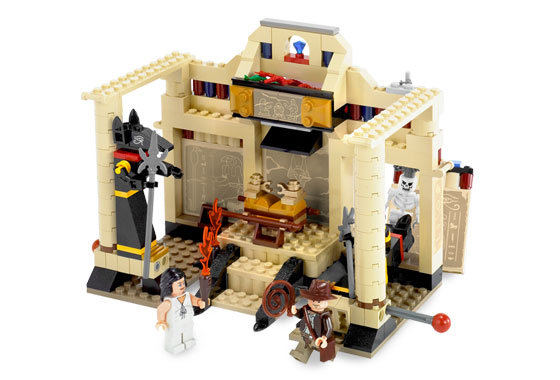
Also note that that set has two statues of Anubis, the god of the afterlife in ancient Egypt. That makes me think that I shouldn't limit myself to the major religions of the current day. With that in mind, before LEGO had a specific license to make official Indiana Jones sets, they had a similar series of sets called the Adventurers. Johnny Thunder (the stand-in for Indy) explored Egyptian ruins in the Desert series, including the Temple of Anubis set shown below.
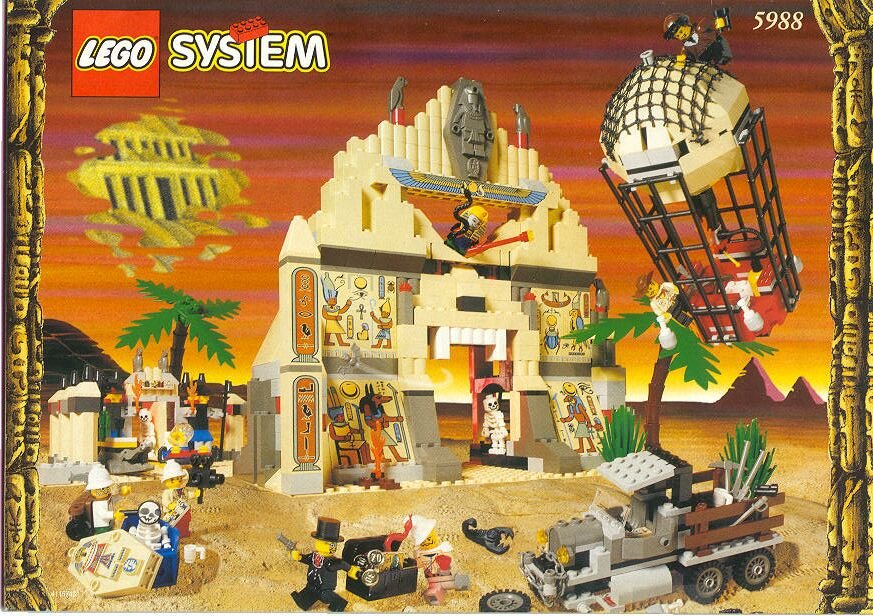
Next Johnny found himself in the jungle, where he found vaguely Aztec/Mayan/Incan/etc ruins in sets like Amazon Ancient Ruins, below. Note, for instance, the headress on the chieftan/priest.
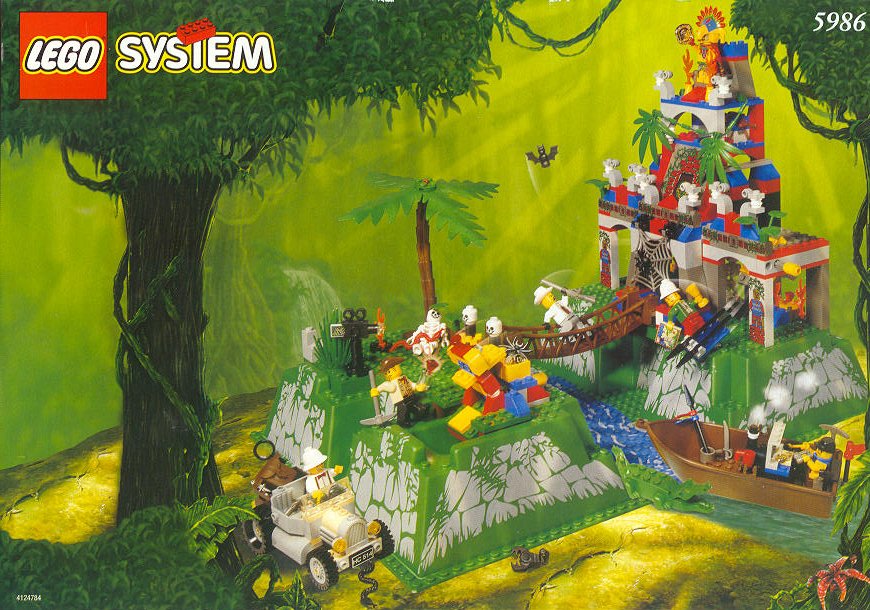
After encountering dinosaurs (no religious content in those sets) Johnny went on an Orient Expedition, where, among other things, he visited the Temple of Mount Everest, below. We'll assume that this is supposed to be Tibetan Buddhist, I guess.
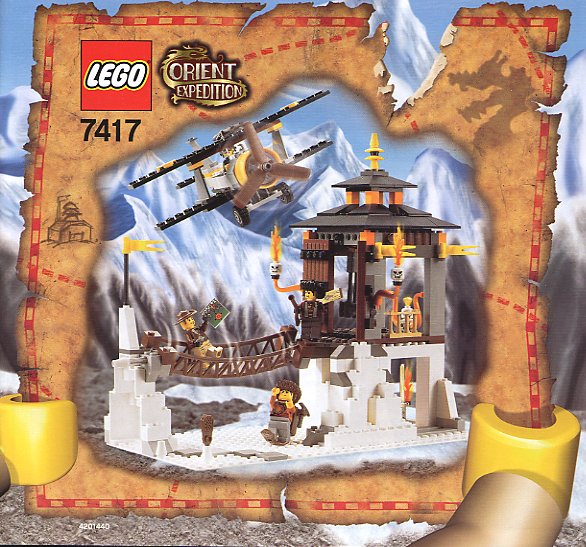
In a separate line, LEGO had pirates sets. A subtheme of that line had the pirates encounter the Islanders in sets such as Enchanted Island. Their religion is totally undefined, but we get a generic idol in that set. I'll assume that it's vaguely based on the Moai of Easter Island.
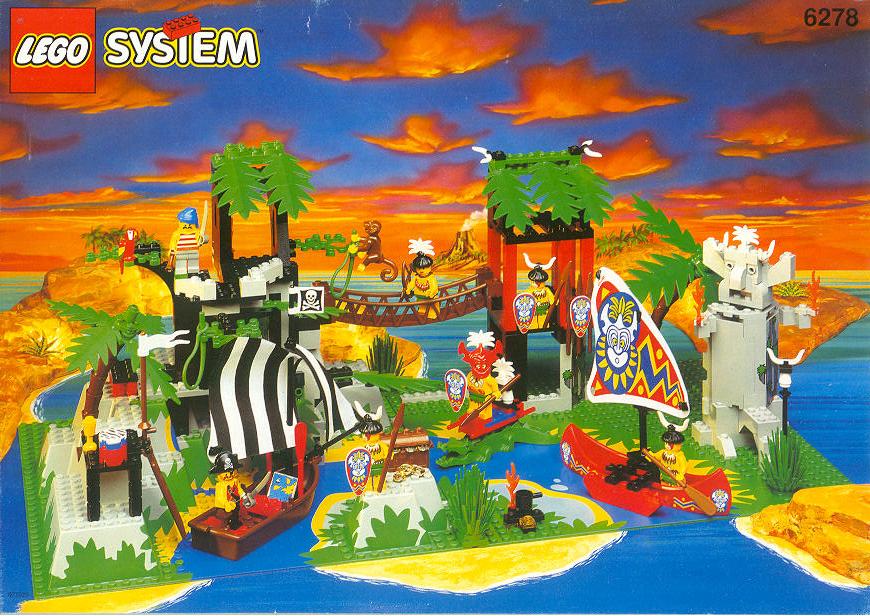
In a comment to a previous discussion of official sets, Brendan correctly pointed out that there have been officials sets based around holidays with religious significance. Christmas is, of course, celebrated by Christians as the commemoration of Christ's birth. Easter is centered on the resurrection of Christ. Thanksgiving involves prayers of praise and thanks. Even Halloween has roots in Catholic tradition (also blending in other traditions). Even though these holidays, and the symbols surrounding them, tie back to religious roots, aspects of their celebration have become more cultural and secular. Most of the sets offered by LEGO really tie to these secular symbols without regard to their background. Perhaps the one that moves beyond the Santa/Reindeer/Bunny/Turkey/Pumpkin line is this angel, first released in 1989 and then rereleased in 2003. Also worth a quick mention, advent calendars have become popular annual sets. Advent is the time leading up to Christmas, taken by many Christians as a time of preparation for the celebration of Christ's birth (as Lent is a preparatory period leading to Easter). About a hundred years ago advent calendars began to be marketed, where a new picture or small gift was revealed each day of December leading up to the big day. The LEGO sets have small LEGO offerings each day, often in a given theme. Last year the news was all about a castle themed calendar, and the rumor is that we will have a pirate calendar this year.

Finally(?), and perhaps not really to be included since this is not a set at all, Luis pointed out these crosses. Before becoming known around the world for little plastic bricks, LEGO made a number of different things. The company started out making wooden toys. After they started molding plastic, it appears that they made some non-toy products as well, including crosses made as custom orders for churches and other groups.
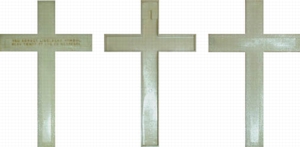
All these Lego sets with religious content are absolutely stunning and superb.
ReplyDeleteIt looks like Freerslev Kirke built in 1762
ReplyDelete